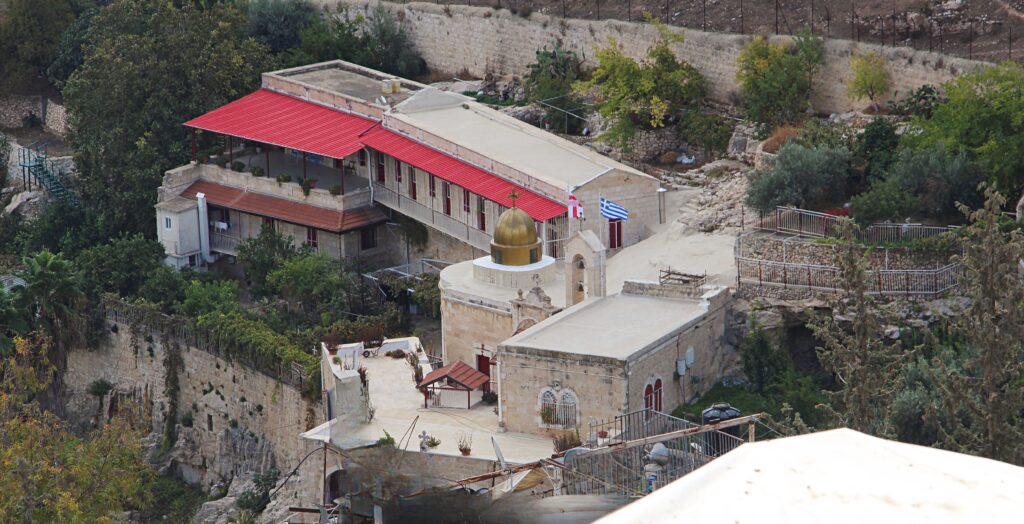
The traditional site as identified by St. Jerome (about 345-420 AD) as the Field of Blood (Matthew 27:8) and the Potter’s Field (Acts 1:18-19) where Judas Iscariot hung himself after betraying Jesus Christ near the Garden of Gethsemane.
“Then Judas, which had betrayed him, when he saw that he was condemned, repented himself, and brought again the thirty pieces of silver to the chief priests and elders, Saying, I have sinned in that I have betrayed the innocent blood. And they said, What is that to us? see thou to that. And he cast down the pieces of silver in the temple, and departed, and went and hanged himself. And the chief priests took the silver pieces, and said, It is not lawful for to put them into the treasury, because it is the price of blood. And they took counsel, and bought with them the potter’s field, to bury strangers in. Wherefore that field was called, the field of blood, unto this day.” Matthew 27:3-8.
“Now this man [Judas] purchased a field with the reward of iniquity; and falling headlong, he burst asunder in the midst, and all his bowels gushed out. And it was known unto all the dwellers at Jerusalem; insomuch as that field is called in their proper tongue, Aceldama, that is to say, The field of blood.” Acts 1:18-19.
What is the significance of thirty pieces of silver? For one, it fulfilled prophecy, “And the LORD said unto me, Cast it unto the potter: a goodly price that I was prised at of them. And I took the thirty pieces of silver, and cast them to the potter in the house of the LORD.” Zechariah 11:12. As established in Exodus 31:32, thirty pieces of silver was the value of a slave’s life in Israelite culture. Are we not all slaves to sin? Jesus Christ has taken upon himself our wages of sin, and through his grace we are saved. See Romans 6:23 and 2 Corinthians 12:9.
The Aceldama (Aramaic for field of blood, also spelled Akeldama) is now also known as the Greek Orthodox Monastery of Saint Onuphrius. It is located in the Hinnom Valley across from Mount Zion. The monastery was built in 1874 on the site of an early Christian graveyard where there are several ancient burial caves which have been turned into chapels. One of the caves is a site where some of the Apostles hid during the crucifixion, according to a 16th century tradition. The monastery is dedicated to a 3rd or 4th century hermit monk who lived in the desert of Egypt, named Saint Onuphrius. He was known for his very long, thick beard and wearing nothing but a loincloth of leaves.
< Previous post on The Mocking of Jesus by the Soldiers: The Roman Game of Kings
Return to the Homepage
2 responses to “The Potter’s Field Where Judas Iscariot Hung Himself”
very interesting & informative. Gave more insight/information about Judas not previously known. Thank you so much for giving us such valuable information & picture.
You are welcome.